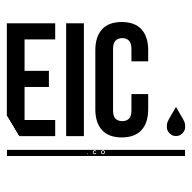How Do You Foster a Collaborative Environment as An Editor-in-Chief?
In the quest to cultivate a synergistic workspace within editorial teams, we've gathered insights from Editorial Directors and Managing Editors, among other experts. Starting with managing individuality and respect, to uniting the team with monthly fun projects, discover six methods these professionals employ to foster a collaborative environment.
- Manage With Individuality and Respect
- Set Clear Goals and Use Collaboration Tools
- Encourage Open Communication and Creativity
- Foster Interest Through Content Discussions
- Implement the DARING System for Teamwork
- Unite Team with Monthly Fun Projects
Manage With Individuality and Respect
Here at Status Labs, I lead a content team of five talented writers and editors, and nearly 20 freelance writers. But before that, I learned lessons on how to lead from the amazing leaders who came before me. One enduring piece of management advice? Manage different people differently. It may seem odd to the eyes and ears, but it's a nod to everyone's individuality. My team members are all a joy to work with. Together, we manage a combined 25 different high-retainer client accounts. I couldn't manage such a Herculean feat without their talents and efforts. I remind them of that often and hold daily touchpoints to stay connected. I believe in leading with compassion, transparency, integrity, and respect toward my direct reports.
Set Clear Goals and Use Collaboration Tools
I encourage teamwork by making sure everyone feels comfortable giving helpful feedback and praising each other's good work. When team members support and respect each other, we all get better at what we do, and we trust each other more.
Setting clear goals and delineating responsibilities within the editorial team is essential for fostering collaboration. When we clearly explain what each person on the team does and how it helps us reach our main goals, it makes everyone responsible for their part. This way, we avoid confusion and give everyone the power to work together towards the same aims.
And lastly, I think using real-time collaboration tools is important for teamwork. We use tools like web-based software for managing and planning publications, shared documents, and messaging apps. These tools make our work smoother, help us work together right away, and ensure everyone knows what's happening during the workflow.

Encourage Open Communication and Creativity
Encouragement. Everyone on my team is constantly encouraged to come up with ideas, speak their mind, and provide feedback. We prioritize things as a group, and everyone has a voice. Fostering a culture of team members who aren't afraid to speak their minds provides you with an endless well of creativity, quality, and opportunities.

Foster Interest Through Content Discussions
Discussion, discussion, discussion. I love talking to the team about our content's subject matter. It doesn't matter if this is during small waiting periods before meetings or during full-length podcasts. Finding the time to discuss your content and material helps display everyone's strengths and weaknesses in certain areas, while also fostering stronger intrigue in the material itself.
Implement the DARING System for Teamwork
In the times of AI-generated content and news bots, the editorial team still assumes substantial significance due to the edge it brings with creativity, integrity, and human connection. With technology taking huge strides in the editorial world, it is critical to ensure that the editorial team stays collaborative, cohesive, and cordial. Personally, I believe in a system called DARING, an acronym that I have coined. DARING stands for 1. Defining Roles & Timelines, 2. Appreciating & Rewarding Creativity, Accuracy, and Ethics, 3. Resolving Conflict Through Open Communication, 4. Inspiring & Mentoring Team Members, 5. Navigating Technological Advancements Fearlessly, and 6. Galvanizing a Collaborative Approach for Every Assignment.

Unite Team with Monthly Fun Projects
Once a month, I like to get the team together to discuss a fun project. What is something you need to exist on the internet? That way, we can incorporate more interesting things into the content calendar, and most of the time, it makes for some of the most fun content to work on. Fun content means more people want to spend time on it; they'll work better together and spend more time getting it promoted.


